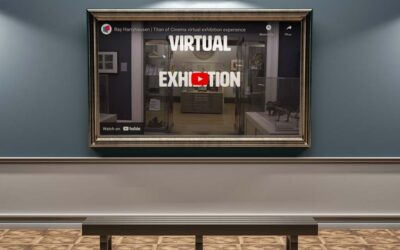KM Participation – How to Overcome Reluctance Part 1

Stan Garfield
Reluctance to speak is a common organizational problem. A classic challenge for knowledge managers is getting people to break the silence on calls and in meetings. It can also be difficult to line up presenters, get people to attend, and hear from more than a few voices during the calls. Here are some of the reasons for this, and what to do about them.
Lying low: There once was a time when corporate layoffs were not as commonplace as they are now. When people’s jobs became less secure, this increased their desire to stay out of the spotlight. The prevailing wisdom is to keep your head down, don’t call attention to yourself by speaking up or expressing an opinion, and don’t rock the boat. To overcome this, recognize those who are active, so that community participation is associated with high performers, not with layoff candidates.
Attention deficit: Another trend is the rise of multitasking, and as a result, not paying attention to what is being said on a call. In this case, people hope that their names will not be called, and may be reluctant to ask a question or make a comment due to the fact that they have missed some or all of the details of the discussion. To help overcome this, try to have engaging speakers, interesting visuals, and a brisk pace.
Wait, wait, don’t speak: It’s human nature to wait for someone else to speak first. Once the ice has been broken, the floodgates often open up. This frequently occurs in face-to-face meetings; after the first question is asked, many others are asked, and then time runs out. I haven’t seen this happen as much on calls. But it is worth trying to prime the pump by asking a few participants to ask questions to set the example for others. Planting questions may help get the discussion going.
Do it in private: Some people will type questions into a private chat, rather than ask them in public. This is similar to the people who come up to talk one-on-one with the presenter at the end of a conference session. Offer this channel, and then voice the questions on the call without naming the people who submitted them.
Wasting time: Community members may be wary of the stigma associated with spending time on a voluntary activity such as attending a community call. Community participation can be viewed as a frivolous waste of time, and not doing real work. Get the support of respected leaders for community participation, or even better, get those leaders to attend themselves and to communicate their wish that others do the same. Provide summaries, recordings, and presentation decks from calls so that others can see what they are missing, and to demonstrate the value of the calls.
Too busy: Some people are join-only members. They have good intentions, but rarely actually attend community calls or meetings. They prioritize other mundane, routine, or time-sensitive tasks before learning, sharing, and connecting on a community call or at a local meeting. Remind community members that they are expected to do more than join, and remind them of each call the day before and right before it starts. You can also offer continuing education or learning hours for community participation, which may count towards personal development goals.
Lurkers anonymous: These are better than join-only members, in that they will attend calls, but not speak up. As long as they are paying attention and learning, this is fine. They may not be contributing to the call, but they are benefiting from it, and that helps justify the effort of scheduling and hosting the call. Never disparage lurkers; instead, thank them for attending.
Seen but not heard: Some people prefer to type into a chat window, Twitter chat, or instant message. They have something to say, but they prefer to do it by text rather than by speaking. It pays to provide a channel for this, and to monitor that channel to relay questions and comments to the presenter. This can be the webinar tool’s chat window, a predetermined hashtag in Twitter, or a whiteboard or similar tool. If you can offer an anonymous channel, even more people are likely to use it. You can also solicit questions in advance by email or online forum, and then you can read these questions without using the names of those who submitted them.
Any questions? Few are motivated to speak up if you ask, “are there any questions?” during a presentation. Instead, ask more specific questions of the audience. For example, “Has anyone experienced what the presenter just described?” or “What are some other techniques being used by our community members?” You can also try calling on people by name to offer their thoughts, but some will be unprepared to do so. Once when I tried this on a call, I heard a barrage of exit tones as participants hung up in fear that they would be called next. So be prepared for that to happen and mute the exit tones.
Fear factor: People may avoid talking on calls because they are afraid they will be contradicted or attacked. They may be unsure that what they have to say is worthwhile. And most people are afraid of appearing ignorant, or worse, looking like a complete idiot. Try to establish a supportive tone, use humor, and celebrate those who overcome their fear to say what’s on their mind.

Stan Garfield
The above is an excerpt from my book published by Lucidea Press, Proven Practices for Promoting a Knowledge Management Program, Chapter 12: “Use the Keys to Success”. Please also read my posts offering advice and insights drawn from many years as a KM practitioner, and you may want to learn how Lucidea’s Inmagic Presto enables users to find, not just search!
Similar Posts
Lucidea’s Lens: Knowledge Management Thought Leaders Part 98 – Rachad Najjar
Generative AI, expertise mapping, and knowledge sharing—Rachad Najjar has spent his career at the intersection of these disciplines. As the CEO of 3R Knowledge Services and former knowledge-sharing leader at GE Vernova, he has helped many organizations design smarter KM strategies. In this edition of Lucidea’s Lens, Stan Garfield highlights Rachad’s contributions to the field.
Examining the National Galleries of Scotland’s Harryhausen Digital Exhibit
In October 2020, the National Galleries Scotland (NGS), Ray Harryhausen | Titan of Cinema (October 2020 – February 2022) exhibition was meant to open and celebrate what would have been Harryhausen’s centenary year. Due to COVID the physical exhibit was forced to close...
Interview with the Author: Jim Cortada on Today’s Facts and the Evolution of Information
Dr. James Cortada, historian and senior research fellow at the Charles Babbage Institute, explores the history of information in his forthcoming book. By examining how information has been created, organized, and used over time, Cortada reveals patterns that continue to shape modern librarianship and knowledge management.
Understanding Archival Acquisition: Purpose, Methods, Challenges, Best Practices
Archival acquisition is the heart of preserving history, ensuring records of lasting value are saved for future generations. In this post, Margot Note breaks down the essentials of archival acquisition with tips and insights to help build meaningful archival collections.




Leave a Comment
Comments are reviewed and must adhere to our comments policy.
0 Comments